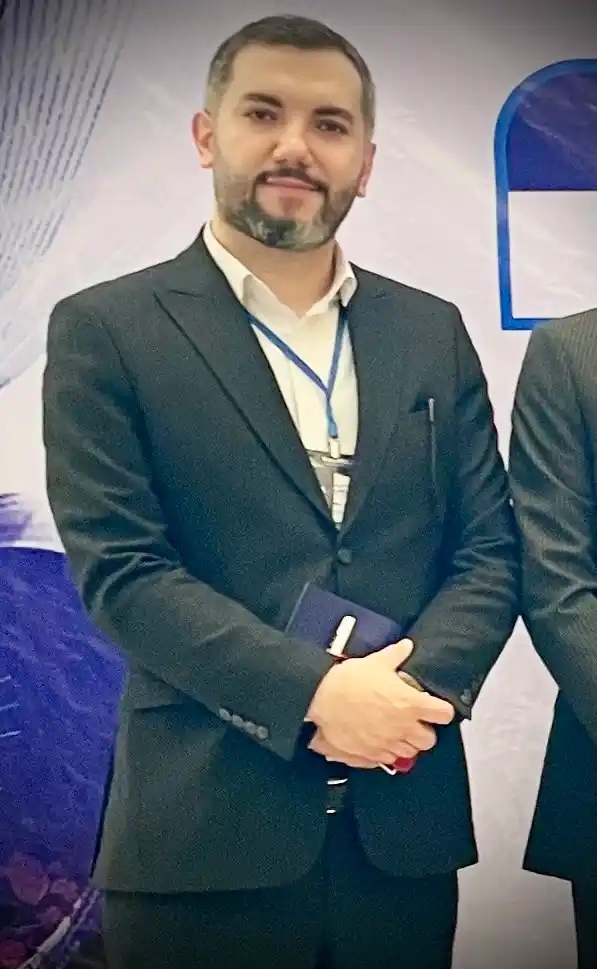احمد محمدیان
دکتر احمد محمدیان کیست؟ Post DBA& PHD مدیریت کسب و کار و استراتژی از دانشگاه تربیت مدرس(CTO،مدرس و مشاور مدیریت)
52 یادداشت منتشر شدهSovereign Organization Model (SO Model) ۲۰۲۵ By Dr. Ahmad Mohamadian
Sovereign Organization Model (SO Model)
By Dr. Ahmad Mohamadian
🔷 Abstract
The Sovereign Organization Model (SO Model) introduces a post-Teal vision of human identity and engagement in the evolving world of work and leadership. Departing from traditional organizational hierarchies and even beyond self-managed teams, SOM proposes that each individual is, in essence, a sovereign organization—a self-regulating, value-generating, and purpose-driven system capable of autonomous action and collaborative integration.Dr. Ahmad Mohamadian
This model aims to redefine how we understand human potential, responsibility, and connectivity in decentralized, purpose-aligned environments.
🔬 1. Introduction
Modern organizational models have evolved through industrial, knowledge-based, and networked paradigms—from Red (power-centric) to Teal (self-managed, evolutionary purpose). However, a critical shift is now emerging: the decentralization of the organization itself into the individual.
SO Model responds to this shift by:
- Reimagining the individual as a complete organizational system
- Providing a structured framework for inner governance, value creation, and inter-sovereign collaboration
- Encouraging conscious evolution over positional growth
🌐 2. Theoretical Foundations
The Sovereign Organization Model is built upon interdisciplinary pillars:
Domain Contribution Integral Theory (Wilber) Multidimensional development of the self Teal Organizations (Laloux) Self-management, wholeness, evolutionary purpose Systems Thinking Individual as a complex adaptive system Cybernetics Self-regulation, feedback loops, internal coherence Philosophical Humanism Emphasis on autonomy, meaning, and dignity of the individual 🧱 3. Core Premise
“Every individual is a sovereign organization—designed for self-governance, meaningful contribution, and evolutionary growth.”
— Dr. Ahmad Mohamadian
This premise challenges:
- The notion of the "employee" or "team member" as dependent roles
- The idea that value emerges only through external institutions
- The limitation of identity to professional titles
Instead, it positions the human being as a living, designing, delivering system.
🧭 4. SO Model Framework: The Six Domains of the Sovereign Self
The model consists of six interrelated domains. Each domain mirrors a function found in traditional organizations, adapted to the individual-as-organization context:
1. 🎯 Purpose & Identity
- Personal Mission: What am I here to contribute to life?
- Vision: The future I commit to shaping
- Core Values: Guiding principles of internal and external action
- Identity Layers: Role fluidity, multiple intelligences, archetypes
2. 🏛️ Internal Governance
- Self-leadership architecture
- Decision-making protocols (intuitive, rational, integrative)
- Personal accountability systems
- Integrity boundaries and contracts
3. ⚙️ Operational System
- Defined internal roles (e.g., creator, strategist, integrator)
- Time, energy, and attention management
- Personal workflow and life operating system (OS)
- Sustainability and regenerative balance
4. 🔄 Evolutionary Development
- Lifelong learning system
- Feedback integration mechanisms
- Reflection practices and cycles of transformation
- Growth indicators: personal KPIs based on values and purpose
5. 🤝 Relational Ecosystem
- Peer-based alliances
- Co-creation networks instead of hierarchical orgs
- Mutual value exchange and decentralized trust
- Conscious communication as systemic alignment
6. 📈 Value & Impact Design
- What value do I create?
- Who benefits, and how is it measured?
- My unique “value engine”
- Designing multiple streams of contribution (economic, social, spiritual)
🔄 5. Lifecycle of a Sovereign Organization Stage Description Awakening Realizing oneself as an independent value system Structuring Defining one’s architecture: values, goals, systems Activation Beginning to operate with intentionality and output Expansion Scaling collaborations, refining systems Regeneration Pausing, realigning, and evolving purposefully 🧠 6. SOM vs. Legacy Organizational Models Aspect Traditional Org Teal Org Sovereign Org Structure Hierarchical Self-managed teams Individual as organization Identity Role-bound Purpose-aligned roles Self-defined, evolving Governance Centralized Distributed Internalized Value Creation Through job Through teams Through self-led systems Evolution External promotion Team learning Internal transformation 🌍 7. Applications of SOM
- Entrepreneurship: Life-business hybrids powered by personal systems
- Education: Self-led learning ecosystems
- Leadership: From hierarchical control to purpose-powered influence
- Community Design: Peer-to-peer sovereign networks
- Mental Well-being: Clarity, coherence, and wholeness in self-structure
- Spiritual Purpose: Operating as a vessel of conscious evolution
📘 8. Future Development
A. Visual Model
A visual canvas of the 6-domain framework (can be created upon your request)
B. Assessment Tool
“Sovereign Quotient (SQ)” — self-diagnostic tool to evaluate maturity in each domain
C. White Paper / Book
Suggested title:
"Human as Organization: The Sovereign Model of Evolutionary Work"
D. Workshops & Education
Programs for individuals, educators, entrepreneurs, and next-generation leaders
✍️ 9. Author’s Declaration
“The future of humanity is not in building bigger institutions, but in building sovereign humans—people who know who they are, why they exist, and how to deliver value with meaning.”
— Dr. Ahmad Mohamadian

pic Dr. Ahmad Mohamadian